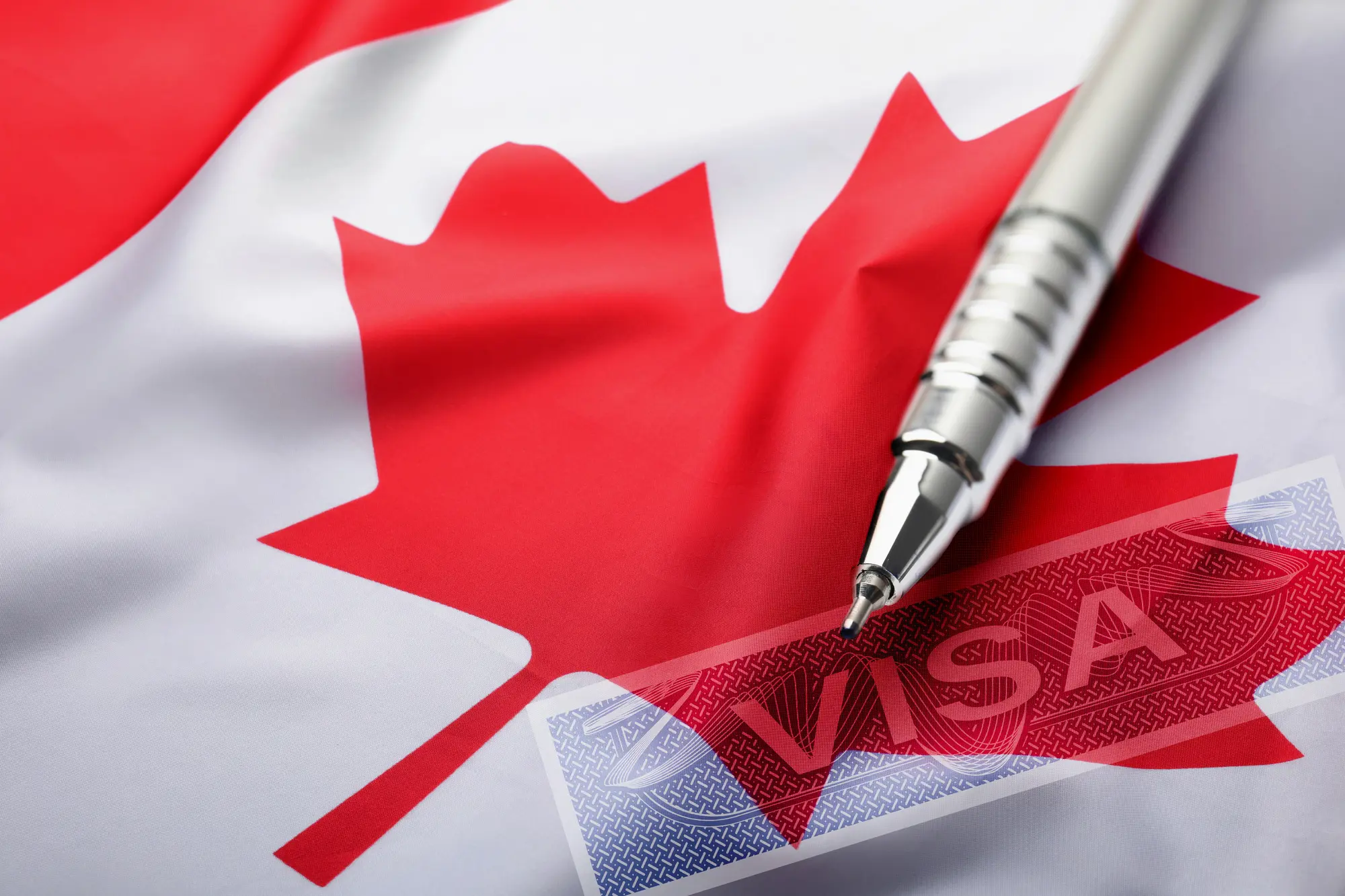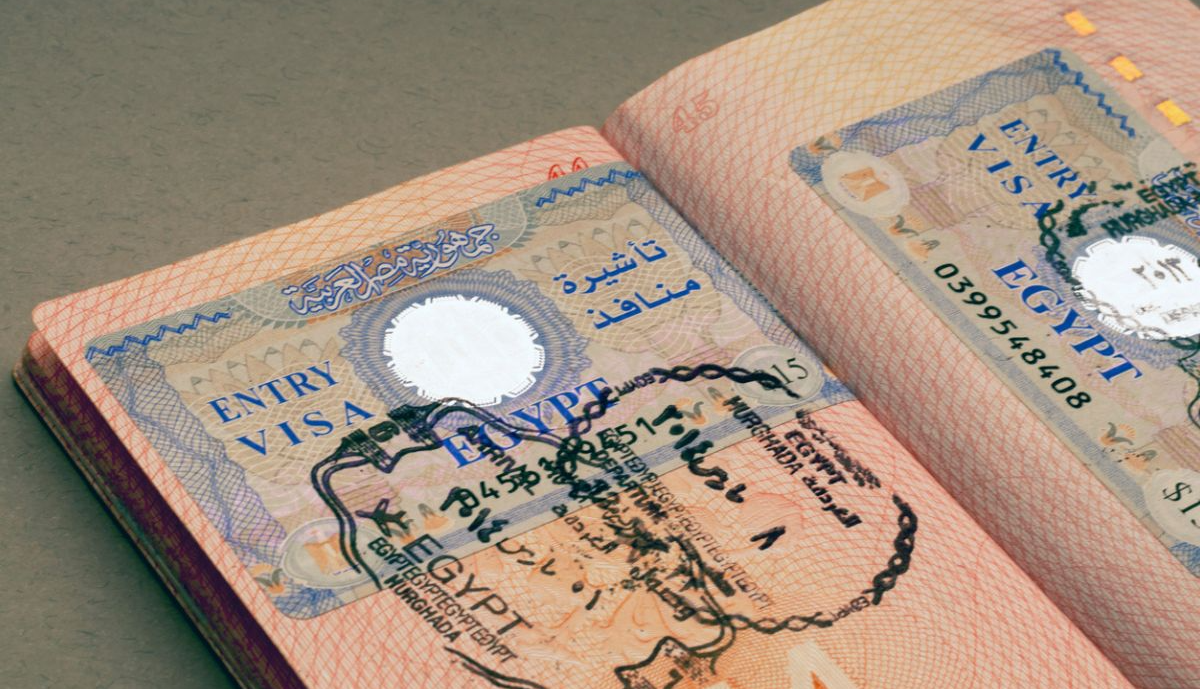
The Canada Open Work Permit (OWP) continues to be a highly sought-after pathway for foreign nationals seeking employment flexibility within Canada. Unlike employer-specific work permits, the OWP does not tie the holder to a single employer, allowing them to work for nearly any employer in any province or territory. However, prospective applicants must be aware of the significant changes and updates to the rules and process that have been implemented, particularly leading into and as of August 2025. These modifications reflect the Canadian government's efforts to manage temporary resident populations, address labour market needs, and ensure the integrity of its immigration programs.
The Canada Open Work Permit: A Comprehensive Overview
The Canada Open Work Permit is a unique immigration document that grants foreign nationals the ability to work for almost any employer across Canada, without the requirement of a Labour Market Impact Assessment (LMIA) or a specific job offer. This flexibility makes it an attractive option for many individuals looking to gain valuable Canadian work experience, support their families, or transition to permanent residency.
What is an Open Work Permit?
An Open Work Permit is essentially a work permit that does not specify the employer, location, or occupation. This contrasts sharply with an employer-specific work permit, which is tied to a particular employer, job title, and often a specific location. The inherent flexibility of an Open Work Permit is its primary advantage, allowing holders to explore various employment opportunities and adapt to Canada's dynamic labour market.
Key Benefits of Holding an Open Work Permit
The benefits of an Open Work Permit are numerous, contributing to its popularity:
- Flexibility in Employment: Holders can work for almost any employer in Canada, switch jobs easily, and even work for multiple employers simultaneously, provided they meet general eligibility criteria. This flexibility is a cornerstone of the Open Work Permit's appeal.
- No LMIA Required: Unlike many other work permit streams, an Open Work Permit does not necessitate an LMIA, which is a complex process where employers must demonstrate that no Canadian citizen or permanent resident is available to do the job. This simplifies the application process significantly.
- Path to Permanent Residency: Gaining Canadian work experience through an Open Work Permit can often strengthen an applicant's profile for various permanent residency programs, such as Express Entry (Canadian Experience Class) or Provincial Nominee Programs. This makes the Open Work Permit a crucial step for many aiming for long-term settlement in Canada.
- Family Reunification: The Open Work Permit has historically been instrumental in facilitating family reunification, allowing spouses and common-law partners of certain temporary residents to work in Canada. While new rules have impacted this, it remains a significant aspect for eligible categories.
- Labour Market Integration: By allowing individuals to work freely, the Open Work Permit helps foreign nationals integrate into the Canadian labour market, gain Canadian work experience, and contribute to the economy.
Who Can Apply for a Canada Open Work Permit? Eligibility Categories
While the Open Work Permit offers significant flexibility, its eligibility is not universal. Specific categories of foreign nationals are eligible to apply. As of August 2025, and due to new rules introduced earlier in 2025, the criteria for some categories have become more restrictive.
Common Eligibility Categories for an Open Work Permit:
- Spouses or Common-Law Partners of Skilled Workers: This has been a primary category. However, as of January 21, 2025, significant changes were implemented. Spouses or common-law partners of foreign workers are now only eligible for an Open Work Permit if the principal foreign worker is employed in:
- Training, Education, Experience, and Responsibilities (TEER) 0 (management) or TEER 1 (professional) occupations of the National Occupation Classification (NOC) system.
- Select TEER 2 or TEER 3 occupations in specific sectors identified with labour shortages or linked to government priorities. These sectors include natural and applied sciences, construction, healthcare, natural resources, education, sports, and the military. A comprehensive list of eligible TEER 2 and 3 occupations was released on January 21, 2025.
- Additionally, the principal foreign worker's work permit must have at least 16 months remaining on its validity at the time their spouse or common-law partner applies for the Open Work Permit.
- Spouses or Common-Law Partners of International Students: Similar to skilled workers, new rules effective January 21, 2025, have significantly narrowed eligibility for this group. Spouses or common-law partners of international students are now only eligible for an Open Work Permit if the student is enrolled in:
- Master's programs that are 16 months or longer.
- Doctoral (PhD) programs.
- Select professional and eligible degree programs (e.g., Doctor of Medicine (MD), Doctor of Dental Surgery (DDS, DMD), Bachelor of Law or Juris Doctor (LLB, JD, BCL), Doctor of Optometry (OD), Doctor of Veterinary Medicine (DVM), Bachelor of Science in Nursing (BScN, BSN, BN, BNSc), Bachelor of Education (BEd), Bachelor of Engineering (BEng, BE, BASc)).
- Dependent children of international students are generally no longer eligible for open work permits under these new rules.
- Post-Graduation Work Permit (PGWP) Holders: The PGWP allows international students who have graduated from eligible designated learning institutions (DLIs) in Canada to gain Canadian work experience. While the PGWP itself is an Open Work Permit, there have been updates to its eligibility and extension possibilities. August 2025 sees more flexibility extended to PGWP holders for extensions in many cases.
- International Experience Canada (IEC) Participants: Young individuals from participating countries who are eligible for programs like Working Holiday, Young Professionals, and International Co-op can receive an Open Work Permit under the IEC program.
- Permanent Residency Applicants (Inland Spousal/Common-Law Sponsorship): Individuals who have applied for permanent residence under inland spousal or common-law sponsorship and hold valid temporary resident status may be eligible for a Spousal Open Work Permit (SOWP).
- Vulnerable Workers: Foreign nationals in Canada who are experiencing abuse or are at risk of abuse in the context of their employment may apply for a specific type of Open Work Permit.
- Refugee Claimants or Protected Persons: Individuals in Canada who have claimed refugee status or have been granted protected person status may be eligible for an Open Work Permit.
- Other Specific Circumstances: There are other, less common, categories for Open Work Permit eligibility, such as certain individuals whose work permit application is being processed and who require interim authorization to work.
New Rules and Changes Affecting Open Work Permits in 2025
The Canadian immigration landscape has undergone significant shifts in late 2024 and throughout 2025, particularly impacting temporary resident programs, including the Open Work Permit. These new rules are part of a broader strategy by Immigration, Refugees and Citizenship Canada (IRCC) to manage population growth, address housing concerns, and better align temporary resident numbers with Canada's economic priorities and labour market needs.
Major Policy Changes Effective January 21, 2025
The most impactful new rules for Open Work Permits came into effect on January 21, 2025. These changes specifically target the eligibility of family members of temporary foreign workers and international students.
Restrictions on Spousal Open Work Permits (SOWP)
- Spouses of Foreign Workers: Previously, most spouses of foreign workers were eligible for an Open Work Permit regardless of the principal worker's occupation. The new rules are much stricter. As of January 21, 2025, for a spouse or common-law partner to be eligible for an Open Work Permit, the principal foreign worker must be employed in:
- High-Skilled Occupations (TEER 0 and 1): These include management roles (TEER 0) and professional occupations requiring a university degree (TEER 1), such as senior management, IT professionals, engineers, architects, and university professors. The government's focus is on attracting and retaining individuals in these high-demand, high-skilled professions.
- Select TEER 2 and 3 Occupations in Labour Shortage Sectors: This is a crucial addition. The government has identified specific TEER 2 (e.g., technical occupations, paraprofessionals) and TEER 3 (e.g., skilled trades, administrative supervisors) occupations that are experiencing significant labour shortages. The full list, released on January 21, 2025, covers sectors like natural and applied sciences, construction, healthcare, natural resources, education, sports, and military. This change aims to ensure that Open Work Permits for spouses support occupations critical to the Canadian economy.
- Work Permit Validity Requirement: A significant new requirement is that the principal foreign worker must have at least 16 months of validity remaining on their work permit at the time their spouse or common-law partner submits their Open Work Permit application. This aims to ensure that spousal permits align with the substantial duration of the principal worker's stay.
- Spouses of International Students: The eligibility for spouses of international students to obtain an Open Work Permit has also been significantly curtailed. As of January 21, 2025, only spouses or common-law partners of international students enrolled in the following programs are eligible:
- Master's programs that are 16 months or longer. This specifically excludes shorter master's programs.
- Doctoral (PhD) programs.
- Select professional degree programs, such as Doctor of Medicine, Doctor of Dental Surgery, Bachelor of Laws, Doctor of Optometry, Doctor of Veterinary Medicine, Bachelor of Science in Nursing, Bachelor of Education, and Bachelor of Engineering. This change is intended to focus family reunification efforts on students pursuing higher-level and often longer-term academic qualifications that align with Canada's need for highly skilled professionals.
- Dependent Children No Longer Eligible for OWP: A major impact of the January 21, 2025, rules is that dependent children of foreign workers and international students are generally no longer eligible for an Open Work Permit. This means families may need to explore other immigration pathways for dependent children, such as study permits (if applicable) or visitor visas. This move is part of the broader strategy to reduce the overall number of temporary residents in Canada.
Impact on Existing Open Work Permits
It's important to note that Open Work Permits that were approved under previous measures and have not yet expired will remain valid until their expiry date. This means individuals who already hold valid OWPs are not immediately affected by these new rules.
For renewals, family members can apply to renew their Open Work Permit in Canada if:
- They are applying under the same eligibility criteria as their current permit.
- The requested duration of the renewal matches that of the existing study or work permit of the principal applicant.
Exemptions to the New Spousal OWP Rules
Certain groups are exempt from these restrictive new rules for spousal Open Work Permits:
- Spouses of workers covered by Free Trade Agreements (FTAs): This includes agreements like the Canada-United States-Mexico Agreement (CUSMA).
- Spouses or common-law partners with a pending permanent residence (PR) application: If they hold temporary status in Canada and have applied for PR, they may still qualify for a Spousal Open Work Permit (SOWP). This is a crucial exception for individuals already on a pathway to permanent residency.
Other Notable Changes in 2025 Affecting Work Permits
Beyond the spousal OWP changes, other immigration policy shifts in 2025 also indirectly influence the overall work permit landscape in Canada.
- Study Permit Caps and Provincial Attestation Letters (PALs): Effective January 22, 2024, the federal government introduced a cap on the number of study permits processed, with a further reduction in 2025 to 437,000 intended study permits. To implement this, most new study permit applicants require a Provincial Attestation Letter (PAL) from the province or territory where they plan to study. This cap directly impacts the pool of international students, and consequently, the potential number of spouses who might have been eligible for an Open Work Permit.
- Post-Graduation Work Permit (PGWP) Eligibility Changes:
- For study permit applications submitted after November 1, 2024, there are new eligibility requirements for the PGWP, including language proficiency requirements (CLB 7 for university graduates, CLB 5 for college graduates) and a focus on programs linked to labour shortage markets (unless the program is exempt).
- While the PGWP itself is an Open Work Permit, the stricter eligibility for the PGWP affects who can subsequently apply for it, which then impacts the overall availability of Open Work Permits through this stream.
- As of August 2025, there's an indication of more simplified paths for PGWP extensions in certain situations, providing some positive news for this group.
- Changes to Port of Entry (POE) Work Permit Applications (Flagpoling): Effective December 24, 2024, "flagpoling" for new work permit or study permit applications will generally no longer be allowed for temporary residents already in Canada with valid status. Flagpoling refers to leaving Canada and re-entering to access immigration services at a port of entry. This means most in-Canada applicants must apply online, and receiving a Letter of Introduction (LOI) while in Canada now generally requires leaving the country to activate the work permit, unless they meet very limited exceptions (e.g., US citizens/PRs, certain trade agreement professionals). This change impacts the process of obtaining a work permit for those already in Canada.
- Reduced Permanent Resident Admissions Targets: The 2025-2027 Immigration Levels Plan shows a reduction in permanent resident admissions targets for 2025 (395,000 compared to 485,000 in 2024). This broader reduction in immigration targets, combined with the temporary resident targets, indicates a tightening of the overall immigration landscape.
- Temporary Foreign Worker Program (TFWP) Changes: Moratoriums on low-wage LMIA in specific areas and other changes to the TFWP also influence the number of foreign workers in Canada, which indirectly affects the pool of eligible spouses for Open Work Permits.
- Extension of Public Policy for Closed Work Permit Holders to Change Employers: A temporary public policy that allows foreign workers on closed work permits to change employers and/or occupations before obtaining a new work permit has been extended. This policy, which aims to protect vulnerable workers, allows for greater flexibility for those on employer-specific permits but does not directly pertain to Open Work Permits.
These new rules collectively indicate a more regulated and targeted approach to temporary residency in Canada, emphasizing the country's labour market needs and sustainable growth.
The Open Work Permit Application Process in August 2025
The process for applying for a Canada visa Open Work Permit in August 2025 largely follows established procedures, but it's crucial to be aware of the updated eligibility criteria and document requirements resulting from the new rules. The application is primarily conducted online through the Immigration, Refugees and Citizenship Canada (IRCC) secure portal.
Step-by-Step Application Process:
Determine Eligibility: This is the absolute first and most critical step. Given the new rules in 2025, applicants must meticulously review the updated eligibility criteria specific to their category (e.g., spouse of skilled worker, spouse of international student, PGWP holder, IEC participant, etc.).
- For Spousal Open Work Permits:
- Confirm the principal applicant's TEER category (0, 1, or eligible 2/3 occupation for workers) or study program (Master's 16+ months, PhD, or specific professional degree for students).
- Verify the principal applicant's work permit validity (at least 16 months remaining for workers).
- Ensure the relationship is genuine and documented.
- For PGWP: Confirm graduation from an eligible DLI and meeting any new language or field-of-study requirements if the study permit application was submitted after November 1, 2024.
- General Eligibility: All applicants must meet general admissibility requirements, including proving they will leave Canada at the end of their authorized stay, having sufficient funds, being in good health (if a medical exam is required), and having no criminal record.
Gather Required Documents: Prepare a comprehensive set of documents. Missing or incomplete documents can lead to significant delays or refusal.
- Mandatory Documents for all Open Work Permit Applicants:
- Valid Passport: Must be valid for the entire requested duration of the work permit.
- Application Form: IMM 5710 (Application to Change Conditions, Extend my Stay or Remain in Canada as a Worker) if applying from inside Canada, or IMM 1295 (Application for Work Permit Made Outside of Canada) if applying from outside Canada.
- Family Information Form (IMM 5707): Required for most applicants.
- Proof of Funds: Demonstrate sufficient financial resources to support yourself and any accompanying family members in Canada.
- Digital Photo: A recent passport-style digital photograph.
- Proof of Previous Canadian Permits/Visas (if applicable): Copies of any prior work permits, study permits, or visitor records.
- Specific Documents Based on Eligibility Category:
- For Spouses/Common-Law Partners:
- Proof of Relationship: Marriage certificate, joint bank accounts, shared utility bills, joint lease agreements, photos, and statutory declarations for common-law partners. This is crucial for proving a genuine relationship.
- Principal Applicant's Documents: Copy of the principal worker's valid work permit, proof of employment (e.g., employment letter, pay stubs) indicating their TEER occupation, or the international student's valid study permit and proof of enrollment (e.g., letter of acceptance, transcript) confirming their eligible program.
- For PGWP Applicants: Official transcript and letter of completion from the Designated Learning Institution (DLI) confirming successful completion of an eligible program.
- For IEC Participants: Letter of Acceptance from the IEC program.
- Medical Examination Results: If required for your country of origin or the type of work you intend to do (e.g., healthcare, childcare). It's advisable to complete this upfront to avoid delays.
- Police Clearance Certificates: From any country where you have lived for six months or more since the age of 18.
- Letter of Explanation: If your case is complex or involves sensitive issues (e.g., workplace abuse, refugee status), a detailed letter can clarify your situation.
- For Spouses/Common-Law Partners:
Create an IRCC Secure Account: All online applications must be submitted through the IRCC secure online portal. If you don't have one, you'll need to register. This account allows you to fill out forms, upload documents, pay fees, and track your application status.
Complete the Online Application Form: Fill out the appropriate application form accurately and completely. Ensure consistency of information across all documents (e.g., name spellings, passport numbers).
Pay the Required Fees:
- Work Permit Application Fee: CAD 155
- Open Work Permit Holder Fee: CAD 100
- Biometrics Fee: CAD 85 (if required for your nationality; most applicants will need to provide biometrics).
- Total typical fee: CAD 255 (work permit + open work permit holder fee) + CAD 85 (biometrics) = CAD 340.
- Fees are non-refundable even if your application is refused.
Upload Supporting Documents: Scan and upload all required documents. Ensure scans are clear, legible, and properly labeled (e.g., "Passport.pdf," "MarriageCertificate.pdf"). Certified translations are required for any documents not in English or French.
Submit the Application: After reviewing everything, submit your application. You will receive a confirmation of submission.
Provide Biometrics (if required): If biometrics are required, you will receive an instruction letter. You must provide your fingerprints and photo at a designated Service Canada location or a Visa Application Centre (VAC) within a specified timeframe (usually 30 days). Your application processing will not begin until we receive your biometrics.
Await Decision and Work Permit Issuance:
- Processing Times: Open Work Permit processing times can vary significantly based on your country of residence, the complexity of your case, and the volume of applications IRCC is processing. Current processing times typically range from 6 to 10 weeks for online applications, but may be extended if medical exams or police certificates are required. It's advisable to check the official IRCC website for the most up-to-date processing times.
- Approval Letter (Letter of Introduction): If your application is approved while you are outside Canada, you will receive a Letter of Introduction (also known as a Port of Entry Letter of Introduction or POE Letter). This letter is not your work permit. You must present this letter at a Canadian port of entry (airport or land border) upon your arrival in Canada to receive your physical work permit.
- Work Permit Issuance at Port of Entry: A border services officer will review your documents and issue your actual work permit upon your arrival. This permit will outline the conditions of your work, such as its validity period.
- Approval for In-Canada Applicants: If you applied from inside Canada and your application is approved, you will typically receive a notification in your IRCC online account. You can usually start working as soon as you receive this notification, even before receiving the physical work permit in the mail. The physical work permit usually arrives within 6 weeks of the decision.
Important Considerations and Tips for a Strong Application
- Apply Well in Advance: Do not wait until your current status expires. Apply well before the expiry date to ensure you maintain legal status (implied status) while your new application is being processed, especially if applying from within Canada.
- Accuracy and Consistency: Ensure all information across forms and documents is accurate and consistent. Discrepancies can lead to delays or refusal.
- Certified Translations: Any document not in English or French must be accompanied by a certified translation and an affidavit from the translator.
- Organize Documents: Label and organize uploaded files clearly in your online application.
- Stay Informed: Immigration rules and processes can change. Regularly check the official IRCC website for the latest updates.
- Professional Assistance: Consider consulting with a Regulated Canadian Immigration Consultant (RCIC) or an immigration lawyer, especially if your case is complex or you are unsure about eligibility under the new rules. Their expertise can be invaluable in navigating the process and preparing a strong application.
Life After Receiving Your Open Work Permit in Canada
Receiving your Canada Open Work Permit is a significant milestone. However, there are important steps to take upon arrival and throughout your stay to ensure a smooth transition and compliance with Canadian regulations.
Upon Arrival in Canada (for those applying from outside)
- Port of Entry (POE) Interview: When you land in Canada, be prepared for a brief interview with a Border Services Officer (BSO) at the airport or land border. They will review your Letter of Introduction and supporting documents. Be ready to answer questions about your purpose of visit, financial means, and intent to comply with immigration regulations.
- Issuance of Physical Work Permit: If everything is in order, the BSO will issue your physical work permit. This document specifies the type of work permit, its validity period, and any conditions (e.g., if it's an Open Work Permit). Ensure all details are correct before leaving the counter.
- Apply for a Social Insurance Number (SIN): As soon as you have your work permit, apply for a Social Insurance Number (SIN) at any Service Canada location. Your SIN is essential for working in Canada, paying taxes, and accessing government benefits. You cannot start working until you have your SIN.
Living and Working in Canada with an Open Work Permit
- Finding Employment: With an Open Work Permit, you have the freedom to seek employment across various industries and locations. Utilize Canadian job boards, networking events, and settlement services for job search assistance.
- Understanding Labour Laws: Familiarize yourself with Canadian labour laws, including minimum wage, working hours, and workplace safety regulations. Each province and territory has its own labour standards, so it's important to know your rights and responsibilities.
- Taxes: As a worker in Canada, you will be required to pay income tax. Learn about the Canadian tax system and how to file your annual tax return.
- Healthcare: Depending on your province of residence and the length of your work permit, you may be eligible for provincial healthcare coverage. Apply for your provincial health card as soon as possible.
- Housing: Secure suitable housing. Research rental markets in your desired location, as housing costs can vary significantly across Canada.
- Community Integration: Connect with local settlement services and community organizations. These resources can provide invaluable support with job searching, language training, housing, and social integration.
- Extending Your Open Work Permit: If you wish to continue working in Canada beyond your current work permit's expiry date, you must apply for an extension. Begin this process well in advance (ideally 3-4 months before expiry) to ensure you maintain implied status while your application is processed. Eligibility for extension will depend on your continued meeting of the relevant Open Work Permit criteria at the time of renewal.
Pathway to Permanent Residency
For many Open Work Permit holders, the ultimate goal is often permanent residency in Canada. The Canadian work experience gained through an Open Work Permit is highly valued in various permanent residency streams.
- Express Entry: The Canadian Experience Class (CEC) under Express Entry is a popular pathway for individuals with Canadian work experience. Your Open Work Permit allows you to accumulate this experience. Other Express Entry streams like the Federal Skilled Worker Program (FSWP) and Federal Skilled Trades Program (FSTP) also consider Canadian work experience favourably.
- Provincial Nominee Programs (PNPs): Many provinces and territories have PNPs designed to nominate individuals who meet their specific labour market needs. Accumulating work experience in a particular province or in a high-demand occupation can significantly increase your chances of being nominated.
- Other Pathways: Depending on your unique circumstances, other permanent residency pathways might be available, such as family sponsorship (if you meet the criteria for spousal sponsorship) or certain caregiver programs.
It's crucial to continuously assess your eligibility for permanent residency programs as your Canadian work experience grows. Staying informed about the latest immigration programs and policies is vital for planning your long-term future in Canada.
Conclusion:
The Canada Open Work Permit remains a cornerstone of Canada's temporary resident programs, offering unparalleled flexibility to foreign nationals seeking to work and gain experience in the country. However, the period leading into and including August 2025 has brought significant new rules and changes to its eligibility and process, particularly impacting family members of temporary foreign workers and international students.
These changes reflect a strategic recalibration by the Canadian government to better align immigration levels with national economic objectives, labour market demands, and infrastructure capacity. The focus has shifted towards attracting and retaining individuals in high-skilled occupations and those in critical labour shortage sectors, while also managing overall temporary resident numbers.
Prospective applicants for a Canada Open Work Permit must thoroughly understand these updated rules and meticulously prepare their applications. Diligence in determining eligibility, gathering all required documents, and adhering to the application process is more critical than ever. While the landscape has become more nuanced, the Open Work Permit continues to be a valuable tool for individuals and families looking to build a future in Canada, provided they meet the specific and evolving criteria. Staying informed through official IRCC channels and seeking professional guidance where necessary will be key to a successful application in this dynamic immigration environment.
;More Travel News
-
23-Sep-2024Now Foreigners Get FREE Visas to Pakistan. New Policy Aims to Attract Tourism
-
 26-Feb-2023Special 25% Hajj Quota for Pilgrims launched for those depositing Hajj Fee in dollars
26-Feb-2023Special 25% Hajj Quota for Pilgrims launched for those depositing Hajj Fee in dollars -
 09-May-2025Egypt Launches Revolutionary E-Visa on Arrival System for 78 Eligible Countries
09-May-2025Egypt Launches Revolutionary E-Visa on Arrival System for 78 Eligible Countries -
 19-Oct-2022Hayya Card Holder To Perform Free Umrah
19-Oct-2022Hayya Card Holder To Perform Free Umrah -
 27-Feb-2025Best Time to Book Flights for Cheapest Rates
27-Feb-2025Best Time to Book Flights for Cheapest Rates -
 25-Sep-2019Cheap Hotels in Makkah near Haram 2019
25-Sep-2019Cheap Hotels in Makkah near Haram 2019 -
 16-Apr-2025New travel and access rules released for Makkah in preparation for Hajj 2025.
16-Apr-2025New travel and access rules released for Makkah in preparation for Hajj 2025. -
 03-Jul-2024Top 10 most liked cities to visit in the whole world
03-Jul-2024Top 10 most liked cities to visit in the whole world -
 25-Apr-2022Umrah Last Date from Pakistan
25-Apr-2022Umrah Last Date from Pakistan -
 07-Oct-2025Turkey Introduces 90-Day eVisa for South Asian Travelers
07-Oct-2025Turkey Introduces 90-Day eVisa for South Asian Travelers -
 06-Dec-2019Best Places To Visit In Northern Areas of Pakistan During Snowfalling
06-Dec-2019Best Places To Visit In Northern Areas of Pakistan During Snowfalling -
 25-Aug-2023Saudi Arabia and Pakistan Forge New Agreement to Enhance Pilgrim Experience and Ease Costs
25-Aug-2023Saudi Arabia and Pakistan Forge New Agreement to Enhance Pilgrim Experience and Ease Costs
